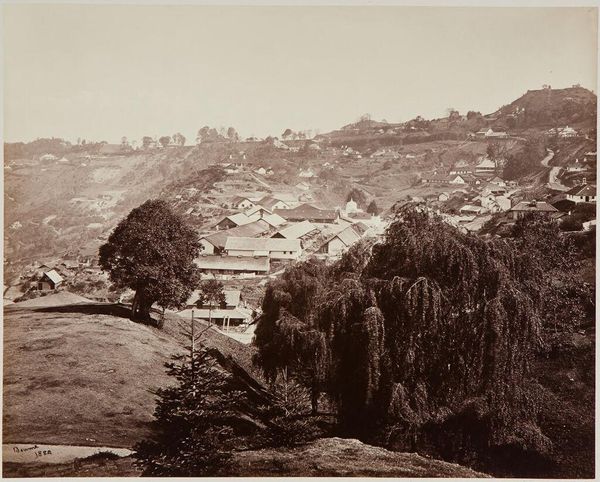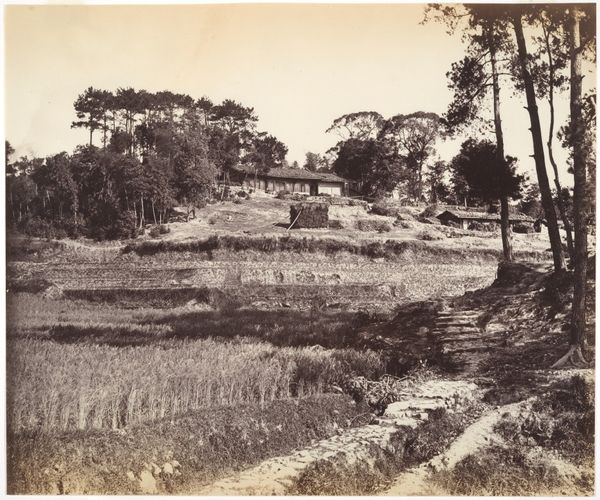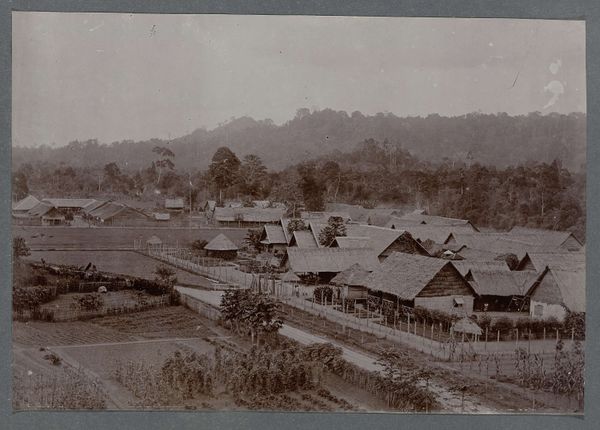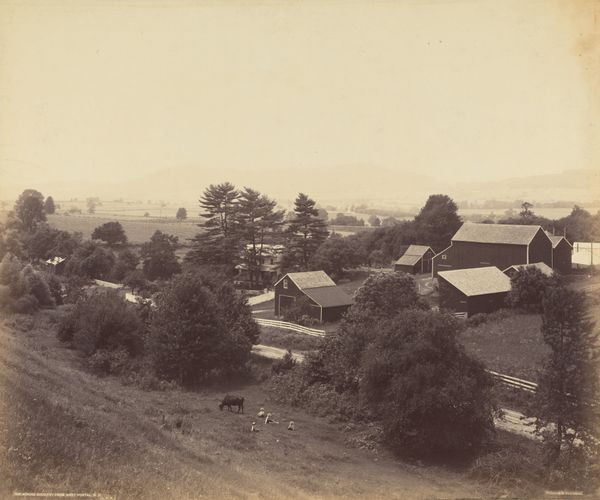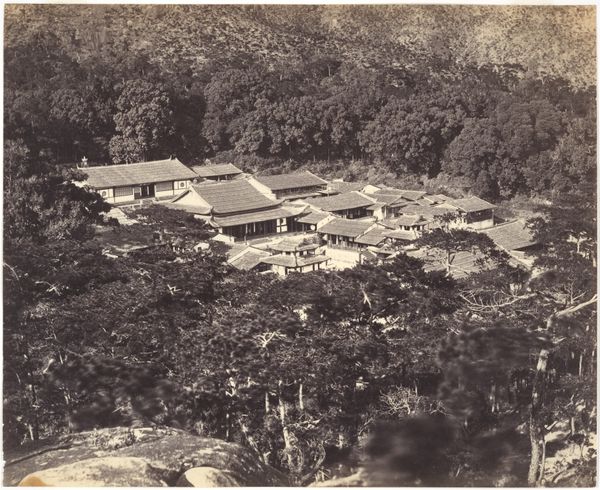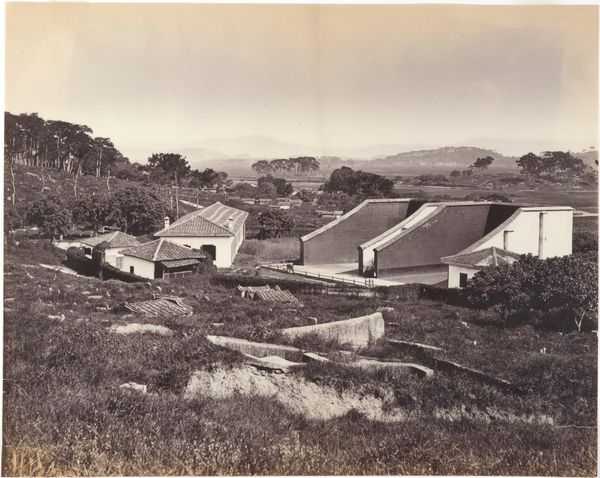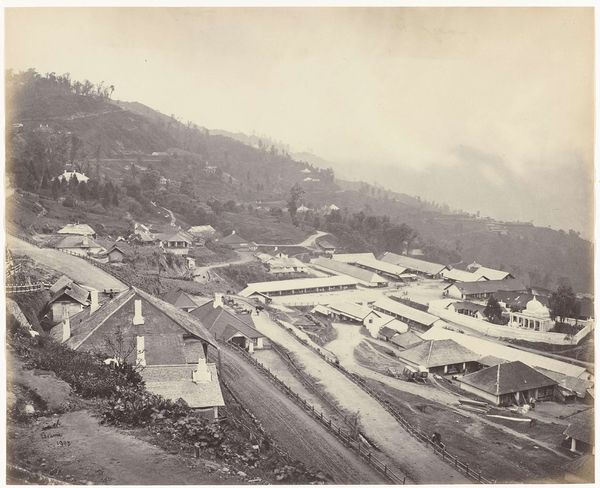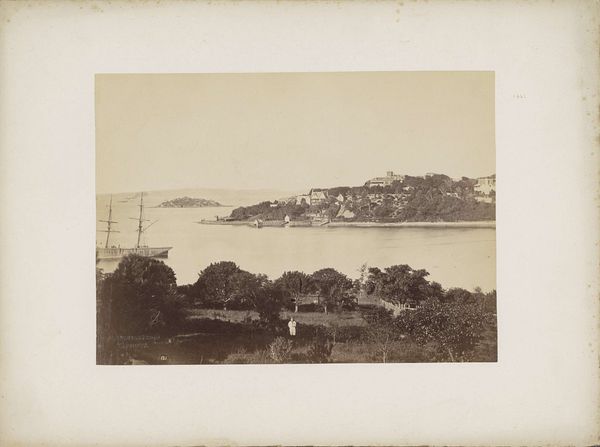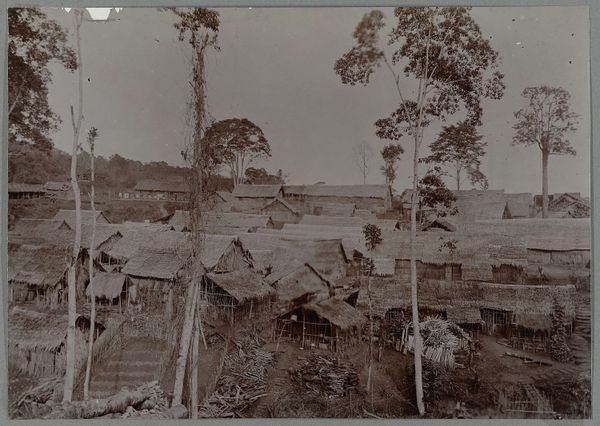
photography, architecture
#
asian-art
#
landscape
#
outdoor photography
#
photography
#
orientalism
#
architecture
Dimensions: Image: 8 1/8 × 11 3/8 in. (20.7 × 28.9 cm)
Copyright: Public Domain
Curator: This albumen print, taken by John Thomson in 1869, is entitled "Missionary Houses, Foochow." It offers a glimpse into the architectural landscape of China during that era. Editor: My first impression is one of a quiet village. There’s a clear foreground, where our perspective anchors, juxtaposed against the layered buildings climbing up the hillside. It's beautifully structured in terms of pictorial planes. Curator: Thomson's work here presents an intriguing viewpoint on the Western presence in China. The missionary houses, perched atop the hill, subtly represent a cultural imposition, a visual hierarchy. They seem separate, distinct from the clustered structures below. Editor: Indeed. Looking at the architecture, the intricate rooflines—they are captivating. The tile work exhibits an attention to detail that elevates the image beyond simple documentation. We have an emphasis on horizontality with the roofs cascading towards us, which create these striking dark accents due to shadow, juxtaposed to lighter wall facades. Curator: Thomson’s composition reveals a certain intention in framing these houses so prominently, it subtly highlights the power dynamic at play. This photograph speaks to a very specific socio-political reality. Consider the role of photography at this time in constructing colonial narratives. Editor: True. Beyond the historical context, consider the effect of light and shadow. Note how it sculpts form, creating an atmospheric quality. The tonal range is somewhat limited, yet Thomson masterfully uses these nuances to delineate planes and draw our attention to key features within the frame. It speaks to Thomson's understanding of composition. Curator: Photography served as a tool for Westerners to catalog and understand "the Orient," influencing perceptions of foreign lands. Thomson’s work reflects, and undoubtedly shaped, those perceptions. This photograph isn't just a record; it's an artifact that carries considerable cultural weight. Editor: In light of our conversation, my understanding now accounts for a layer of cultural interpretation I did not consider earlier. Thomson’s image offers multiple readings and is more nuanced than I initially perceived. Curator: Yes, looking at "Missionary Houses, Foochow" through a historical lens enhances our comprehension, moving it beyond surface aesthetics.
Comments
No comments
Be the first to comment and join the conversation on the ultimate creative platform.

